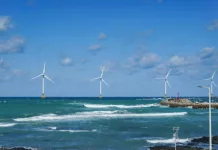Significant updates have been introduced to the National Environmental Policy Act (NEPA), thanks to the Council on Environmental Quality (CEQ). These changes come in stride with the 2023 Financial Responsibility Act, marking a major step in refining the regulation process.
The Role of SEIA in Streamlining Renewables’ Permitting
The Solar Energy Industries Association (SEIA) has been actively involved in advocating for more efficient permitting processes for renewable energy installations. Their determined efforts over the past few years, marked by extensive comments to the CEQ, have culminated in an overhaul that promises to fast-track the development of renewable projects on federal properties.
SEIA Celebrates a Milestone with New Rules
Abigail Ross Hopper, at the helm of the SEIA as President and CEO, expressed her contentment with the newly instituted regulations:
“The CEQ’s recent adoption of the recommendations proposed by SEIA marks a pivotal moment for environmental protection and the acceleration of clean energy projects on public land. We’re now looking at streamlined reviewing mechanisms, including specific timeframes and page limits which, undoubtedly, are steps in the right direction.”
“A noteworthy enhancement is the directive for agencies to adopt a more collaborative stance in the permitting process, thereby improving efficiency. The integration of environmental justice into policy reviews resonates with our ongoing commitment to imbuing energy policies with equity and justice.”
“Importantly, the new regulations aim to curb the extensive review periods for lower-impact infrastructure, thereby freeing up critical resources. This change is instrumental in speeding up the deployment of various projects across federal lands, ranging from solar and storage to emergent carbon capture technologies.”
“With these reforms, the solar and storage sectors are better equipped to achieve the dual objectives of environmental conservation and meeting the administration’s ambitious target of 25 gigawatts of renewable energy on public lands by 2025. And with the future looking brighter, we’re set to permit the next 25 gigawatts even more swiftly, all the while preserving the integrity of public lands. It’s a true testament to the win-win paradigm for the industry and the environment alike,” concluded Hopper.

























